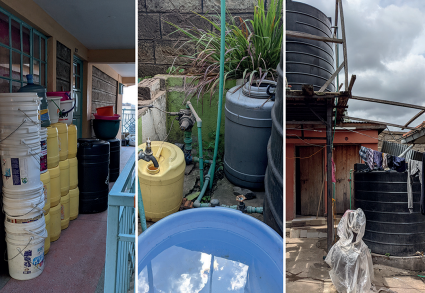Storage city: Water tanks, jerry cans, and batteries as infrastructure in Nairobi
Titled "Storage City: Water Tanks, Jerry Cans, and Batteries as Infrastructure in Nairobi," this journal article delves into the transformation of urban studies and infrastructure research, moving away from the traditional notion of a networked city. Instead, it spotlights the emerging interest in investigating the post-networked city, diverse infrastructural elements, and the unexplored realms existing beyond the typical grid, particularly prominent in cities of the southern hemisphere. Focusing on discussions encompassing the evolution of southern urban structures and their associated socio-technical infrastructures, the article sheds light on a pivotal yet frequently overlooked element within contemporary urban frameworks: storage. Within Nairobi, a city shaped by its diverse and unpredictable infrastructural landscape, households from various socio-economic backgrounds adopt different approaches to storing water and electricity.
Through comprehensive analysis, the article illustrates how the aggregation of domestic storage practises and associated tools and methodologies collectively shape what can be defined as a 'storage city'. This concept is not in opposition to either a networked or post-networked urban setup but rather intricately interwoven with both. The article underscores the critical role of domestic storage in maintaining the socio-technical equilibrium of Nairobi. It highlights a diverse range of storage techniques and tools employed by the residents. It emphasises the potential of focusing on storage in reconceptualising the dynamics of infrastructural relationships, surpassing conventional notions of networks and fluidity.
Abstract based directly on source.



Comments